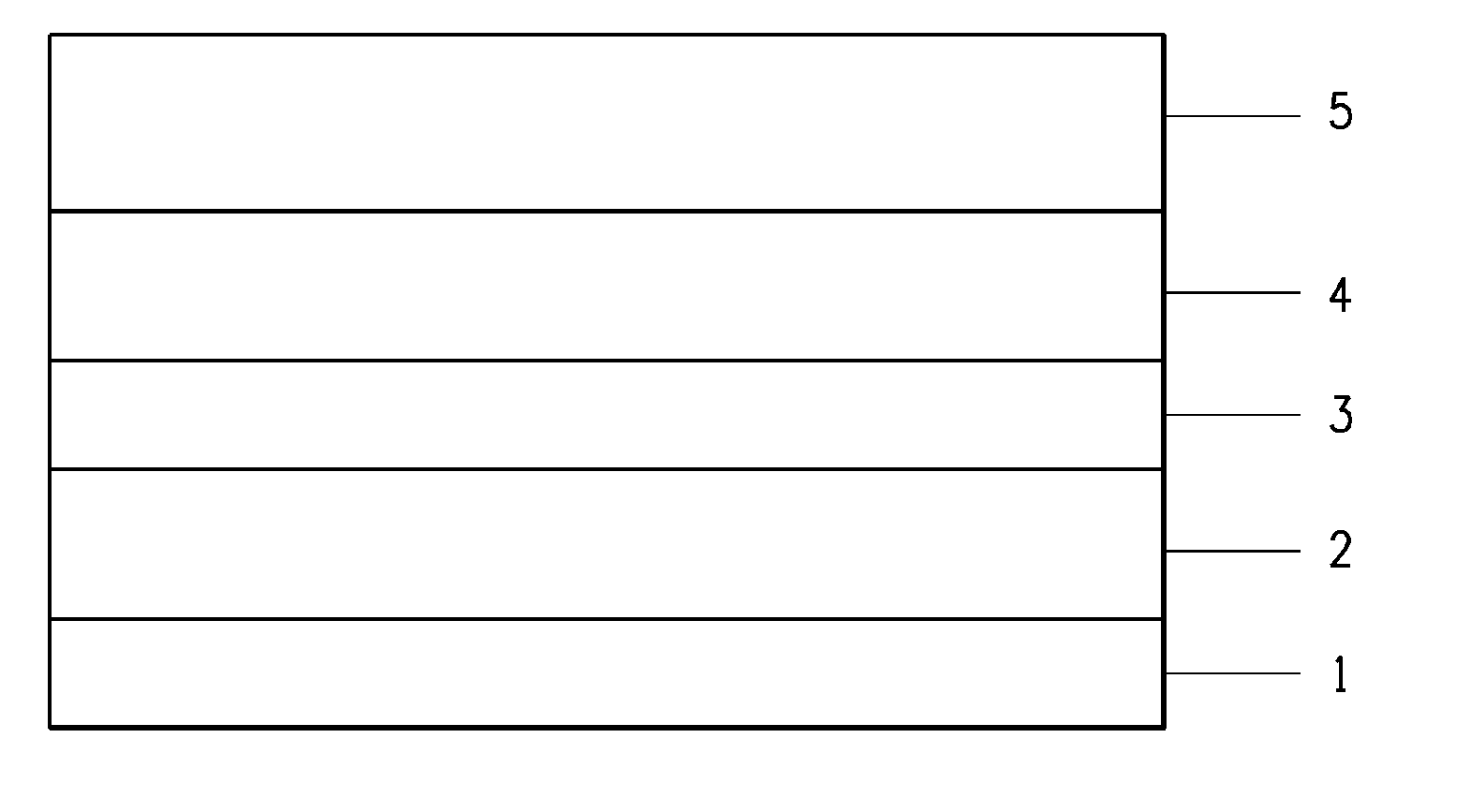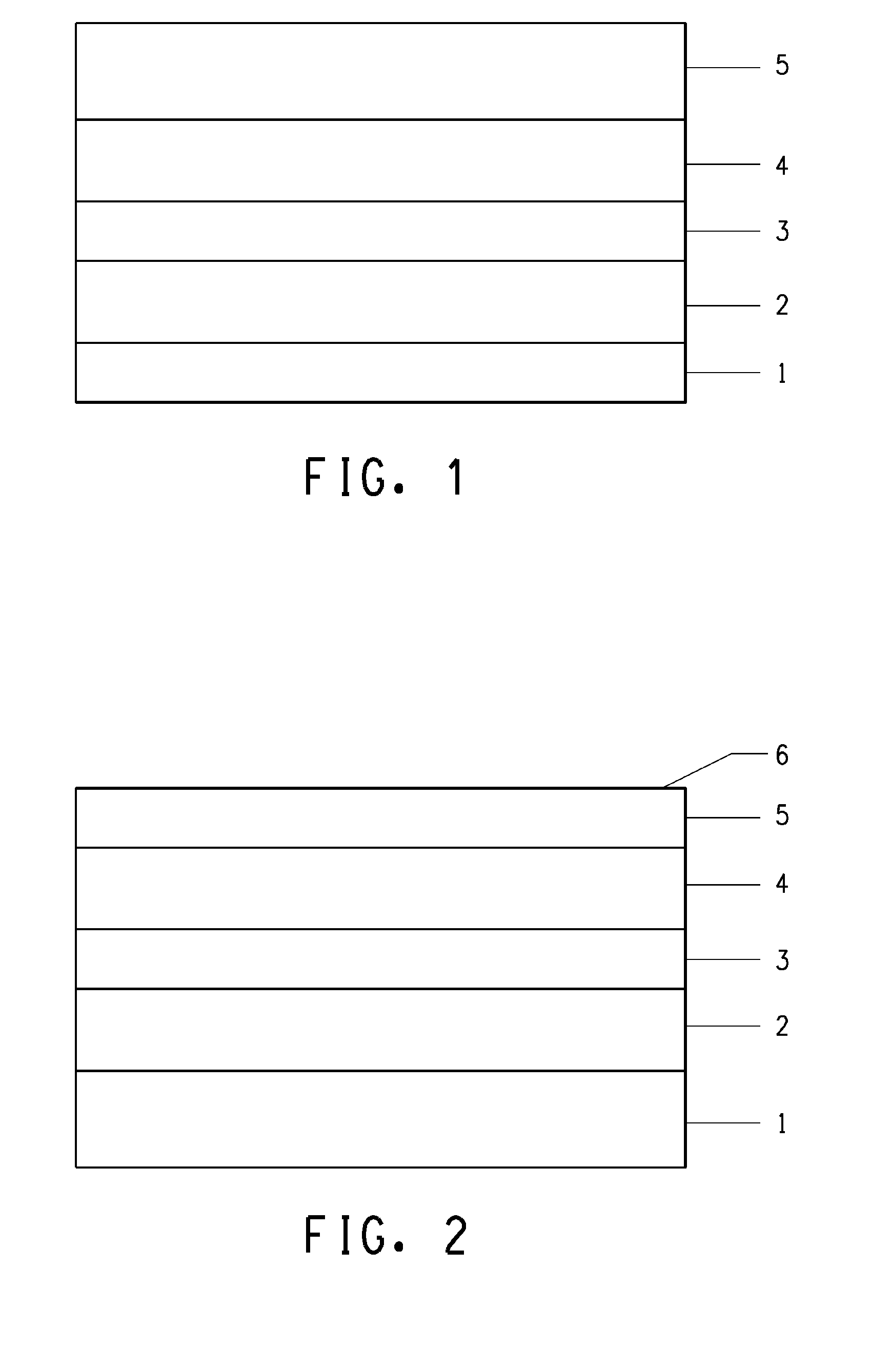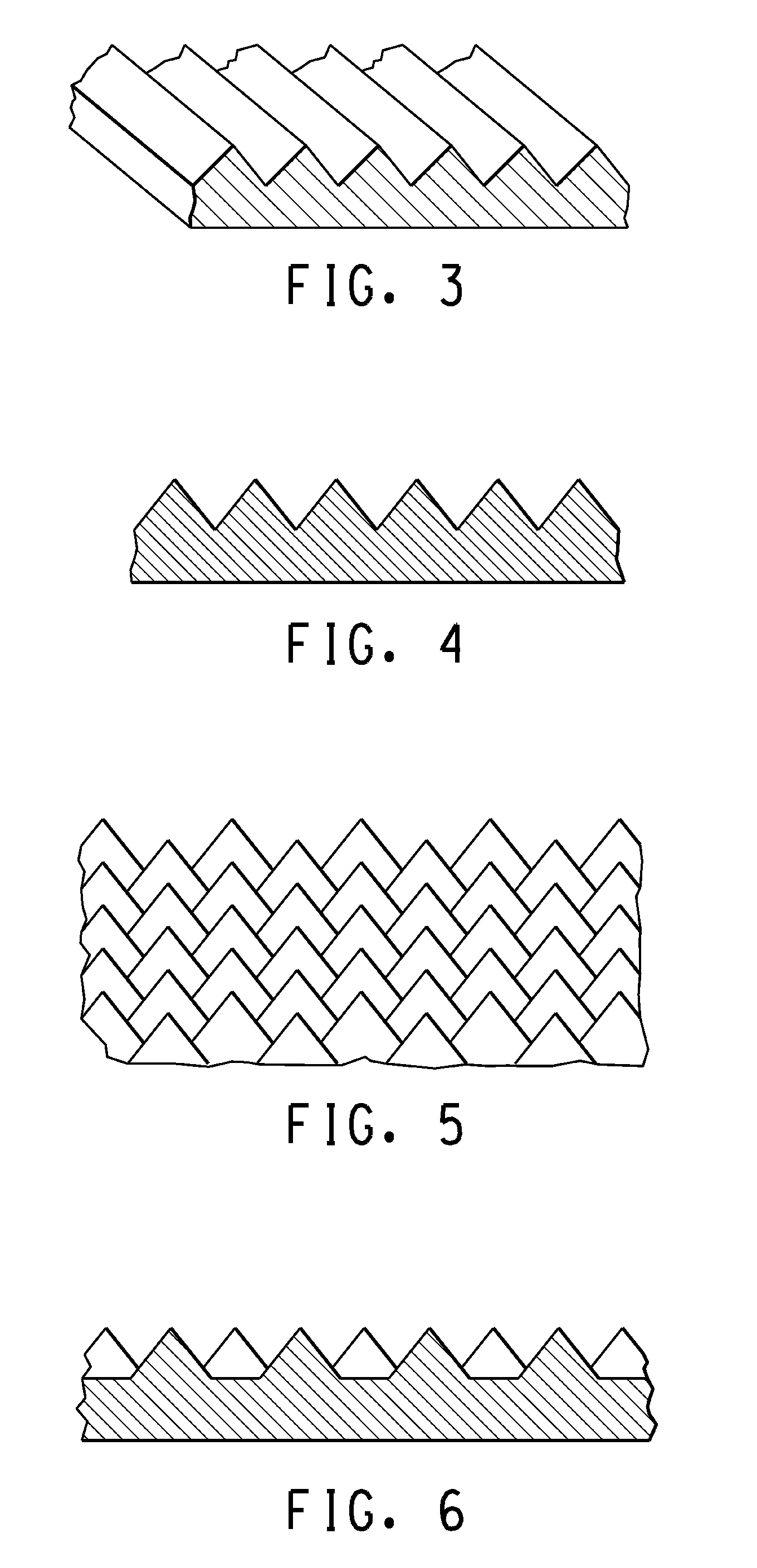Solar cell sheet and a method for the preparation of the same
a technology of solar cells and solar energy, applied in solar heat collectors, solar heat systems, heat generation devices, etc., can solve the problems of insufficient supply, low transmittance, and impending need for new energy resources to replace petroleum fossil fuels, and achieve the effect of improving light trapping ability
- Summary
- Abstract
- Description
- Claims
- Application Information
AI Technical Summary
Benefits of technology
Problems solved by technology
Method used
Image
Examples
example 1
[0108]Obtained a perfluoroethylene-perfluoropropylene copolymer sheet (with 50 μm thick, Teflon® DuPont, United States). The copolymer was extruded through a NRM extruder of Davis-Standard Corporation Limited (diameter 4.5 in. and aspect ratio 20:1). Then, it was stretched to a film with thickness of 50 μm by passing through a T shaped molder head (width 100 in.) of a center feeding produced by Dupont company of the United States followed by passing through a roller with a smooth surface at room temperature and then a roller gin of BGE Corporation of the United States at 200° C. to form a surface texture with a tetrahedron pyramidal shape on one of its surfaces. The surface texture was evenly distributed on the copolymer surface. The distribution density was 1.0×106 pieces / cm2. The height of a single tetrahedron pyramid was 5.0 μm. The length of the base side was 10 μm. The distance of the top points of two adjacent pyramids was 10 μm.
[0109]The above method was used to measure the r...
example 2
[0121]Obtained a perfluoroethylene-perfluoropropylene copolymer sheet (with 50 □m thick, Teflon® DuPont, United States). The copolymer was extruded through a NRM extruder of Davis-Standard Corporation Limited (diameter 4.5 in. and aspect ratio 20:1). Then, it was stretched to a film with thickness of 50 μm by passing through a T shaped molder head (width 100 in.) of a center feeding produced by Dupont Company of the United States followed by passing through a roller with a smooth surface at room temperature. A layer of hollow glass microbeads was evenly coated on one surface of the copolymer sheet by painting. The distribution density was 2.3×105 pieces / cm2. The mean diameter of the microbeads was 18 μm with the standard deviation of 4 μm.
[0122]The above method was used to measure the reflectance of the second surface with a surface texture and the result was 5.6%.
[0123]Obtained a glass (tempered glass, purchased from Dongguan Nanbo Solar Energy Glass Corporation of P.R. China, thic...
example 3
[0129]Obtained a perfluoroethylene-perfluoropropylene copolymer sheet (with 50 □m thick, Teflon® DuPont, United States). The copolymer was extruded through a NRM extruder of Davis-Standard Corporation Limited (diameter 4.5 in. and aspect ratio 20:1). Then, it was stretched to a film with thickness of 50 μm by passing through a T shaped molder head (width 100 in.) of a center feeding produced by EDI company of the United States followed by passing through a roller with a smooth surface at room temperature and then a roller gin of BGE Corporation of the United States at 200° C. to form a surface texture with hemispheric shape on one of its surfaces. The surface texture was evenly distributed on the entire surface of the copolymer sheet. The distribution density was 1.0×106 pieces / cm2. The height of a single hemisphere was 5.0 μm. The diameter of the base side was 10 μm. The distance of the top points of two adjacent hemispheres was 10 μm.
[0130]The above method was used to measure the ...
PUM
 Login to View More
Login to View More Abstract
Description
Claims
Application Information
 Login to View More
Login to View More - R&D
- Intellectual Property
- Life Sciences
- Materials
- Tech Scout
- Unparalleled Data Quality
- Higher Quality Content
- 60% Fewer Hallucinations
Browse by: Latest US Patents, China's latest patents, Technical Efficacy Thesaurus, Application Domain, Technology Topic, Popular Technical Reports.
© 2025 PatSnap. All rights reserved.Legal|Privacy policy|Modern Slavery Act Transparency Statement|Sitemap|About US| Contact US: help@patsnap.com



